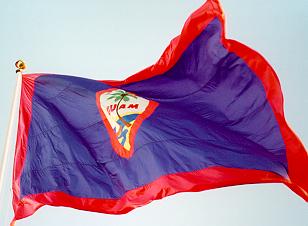|
Crossing the valley |
|
Island Boy Meets the Big City
When my dad came
stateside from Guam, he did not come to get rich quick or to find
adventure like many think migrants do. Instead, he came to give his older
sister family nearby and fulfill his mother’s
Guam is a tiny island of 29 x 5, 6, and 9, depending on where you are. It is the largest island in the Mariana Island chain. The capital is Hagatna, where my family is from. The native people are Chamorro, with Spanish, Filipino, and Asian influences. The islanders are very family oriented, low-key and laid back. They are not pretentious and see no need to put on airs. They live the saying “what you see is what you get.” Because it is an island in the Pacific and its proximity to the equator, it is hot and humid with the danger of tsunamis and hurricanes during monsoon season.
When my dad came in July of 1975, the first thing that he noticed when he landed in San Francisco was the cool air and the fog. He realized that that it took forever to get around and you had to drive to get everywhere! There where not many differences between Guam and the states, except for the smells. When he first arrived, he lived near a packing plant so each season, the wind carried a different smell.
My dad did fulfill his mother’s wishes and did graduate from University of California, accomplishing what he considers his greatest success. But, instead of going back home to work, he met his soul mate and married her, my mom, and decided to stay in the states. The decision was not easy, but he knew that the educational opportunities for his future kids and the work opportunities for himself and his wife where much better if he did stay. The economy in Guam was not conducive to getting a lucrative job. Unfortunately, this decision cost him the ability to be with his parents when they might need help. It was also difficult for his parents to deal with my dad not coming home.
Now that my dad has been stateside for 29 years, he feels that his cultural identity is not so much how he feels, but how he thinks. As his daughter, I see his culture, especially when he is around his family. I am interested and proud of my heritage and love to hear about the island that holds such a special place in my daddy’s heart! Why do you want to know?? According to “Why Migration?” by Saskia Sassen, an article asking why a migrant would leave their homeland and venture to a world unknown, my dad migrated during a time of heavy European migration. He also migrated to an area where migrants tend to cluster, following a typical pattern. “Transnationalism: A New Analytic Framework for Understanding Migration” by Schiller, Basch and Blanc-Szanton, describes a trend commonly found in Pacific Islander students that travel back and forth, having “their feet in two societies.” My dad was one of them until got married to my mom, but in his heart he is still an island boy. Voyages by Cathy A. Small describes a close knit society of Tongans who help each other and support one another even when they come to the states. My dad only had his tow sisters, one in Washington D.C. and one that he lived with. Other Pacific Islanders that had migrated before him did not stay close or remain close knit as other communities would.
Want to know more about Guam? Check out... http://www.cia.gov/cia/publications/factbook/geos/gq.html http://ns.gov.gu/government.html
|
|
Return to Jennifer's Home Page Return to Migration & Culture |

